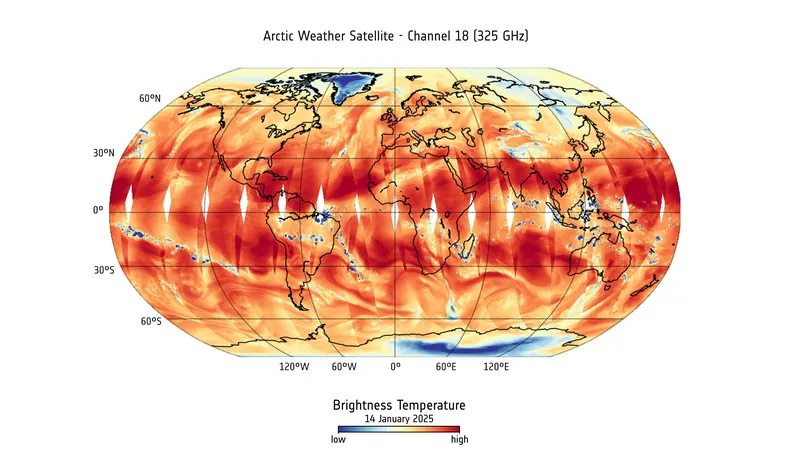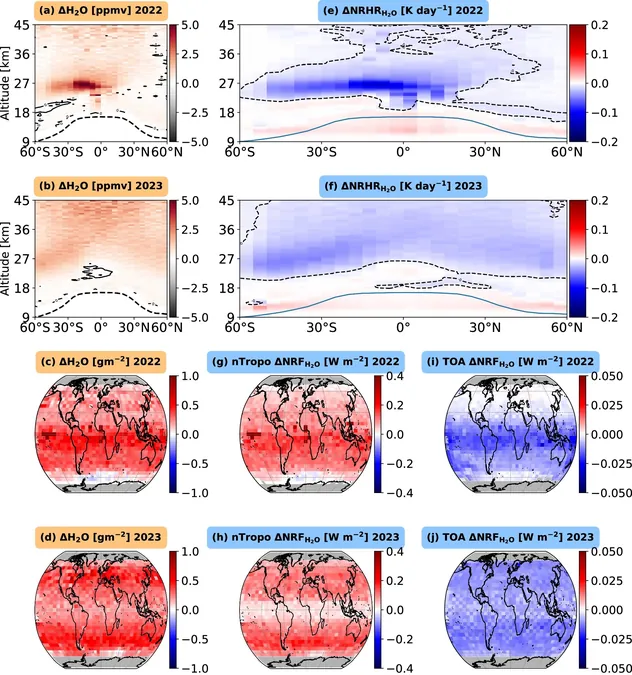
ESA's Revolutionary Arctic Weather Satellite Set to Transform Weather Forecasting!
2025-03-31
Author: Wei
In a world where accurate weather forecasts can save lives and property, the European Space Agency (ESA) has achieved a groundbreaking milestone with its Arctic Weather Satellite, launched just seven months ago. This innovative satellite has already begun redefining how meteorologists understand and predict weather patterns across the globe, particularly in unpredictable Arctic territories.
What makes this satellite truly remarkable is its New Space approach, which has accelerated its development, making it a prototype that aims to deliver detailed temperature and humidity profiles for short-term forecasts – and it's doing just that! Its measuring instrument has been hailed for providing data that rivals traditional, more massive missions. Imagine an agile satellite, weighing in at a mere 125 kg, performing just like its colossal counterparts!
Equipped with a state-of-the-art, 19-channel cross-track scanning microwave radiometer, the Arctic Weather Satellite is capable of penetrating the Earth’s atmosphere to give precise temperature and humidity readings in all weather conditions. Although primarily designed for the Arctic, it collects valuable data worldwide, with an emphasis on humidity readings that are crucial in areas where water vapor concentrations can shift dramatically.
Over its short operational history, the satellite is not just making waves with its technology; it’s also paving the way for future constellations of similar satellites under the proposed EPS-Sterna mission. This initiative could enhance our collective meteorological capabilities significantly.
The European Space Agency is taking the next crucial step by rigorously evaluating how effectively the Arctic Weather Satellite’s data can enhance forecast accuracy. This isn't just a technical exercise; it's vital for gaining the trust of Eumetsat and its member states regarding the EPS-Sterna follow-on constellation.
Agencies across Europe, including the Danish Meteorological Office, Germany's DWD, and the UK Met Office, are currently analyzing the satellite’s data. Initial feedback has been overwhelmingly positive, confirming that its microwave radiometer performs comparably to other leading instruments developed in Europe, the USA, and China.
Philippe Chambon from Météo-France enthused about the potential of the satellite's data, stating their initial evaluations show promise for significant improvements in global forecasting models. Plans are already underway to integrate this revolutionary data into systems later this year.
But that's not all – the Arctic Weather Satellite revolutionizes meteorology further by incorporating a groundbreaking 325 GHz sounding channel never before used for operational weather forecasting. This innovation could provide unprecedented insights into cloud-ice interactions and atmospheric conditions, further enhancing the accuracy of weather predictions.
As the eyes of the meteorological community remain fixed on this satellite, ESA's Project Manager, Ville Kangas, emphasized the immense potential still ahead. With ongoing analysis and corrections, the Arctic Weather Satellite is poised to exceed expectations in the coming months.
Should the EPS-Sterna constellation of six satellites take flight, it will complement existing missions such as the Meteosat Third Generation and the MetOp Second Generation, filling crucial gaps in temporal coverage left by current systems, especially in polar regions where traditional satellites often fall short.
With its sleek dimensions and advanced technology, the Arctic Weather Satellite ushers in a new era for weather forecasting—one that promises timely and accurate information to help protect lives and property around the world. Keep your eyes on the skies; the future of meteorology is bright!






 Brasil (PT)
Brasil (PT)
 Canada (EN)
Canada (EN)
 Chile (ES)
Chile (ES)
 Česko (CS)
Česko (CS)
 대한민국 (KO)
대한민국 (KO)
 España (ES)
España (ES)
 France (FR)
France (FR)
 Hong Kong (EN)
Hong Kong (EN)
 Italia (IT)
Italia (IT)
 日本 (JA)
日本 (JA)
 Magyarország (HU)
Magyarország (HU)
 Norge (NO)
Norge (NO)
 Polska (PL)
Polska (PL)
 Schweiz (DE)
Schweiz (DE)
 Singapore (EN)
Singapore (EN)
 Sverige (SV)
Sverige (SV)
 Suomi (FI)
Suomi (FI)
 Türkiye (TR)
Türkiye (TR)
 الإمارات العربية المتحدة (AR)
الإمارات العربية المتحدة (AR)